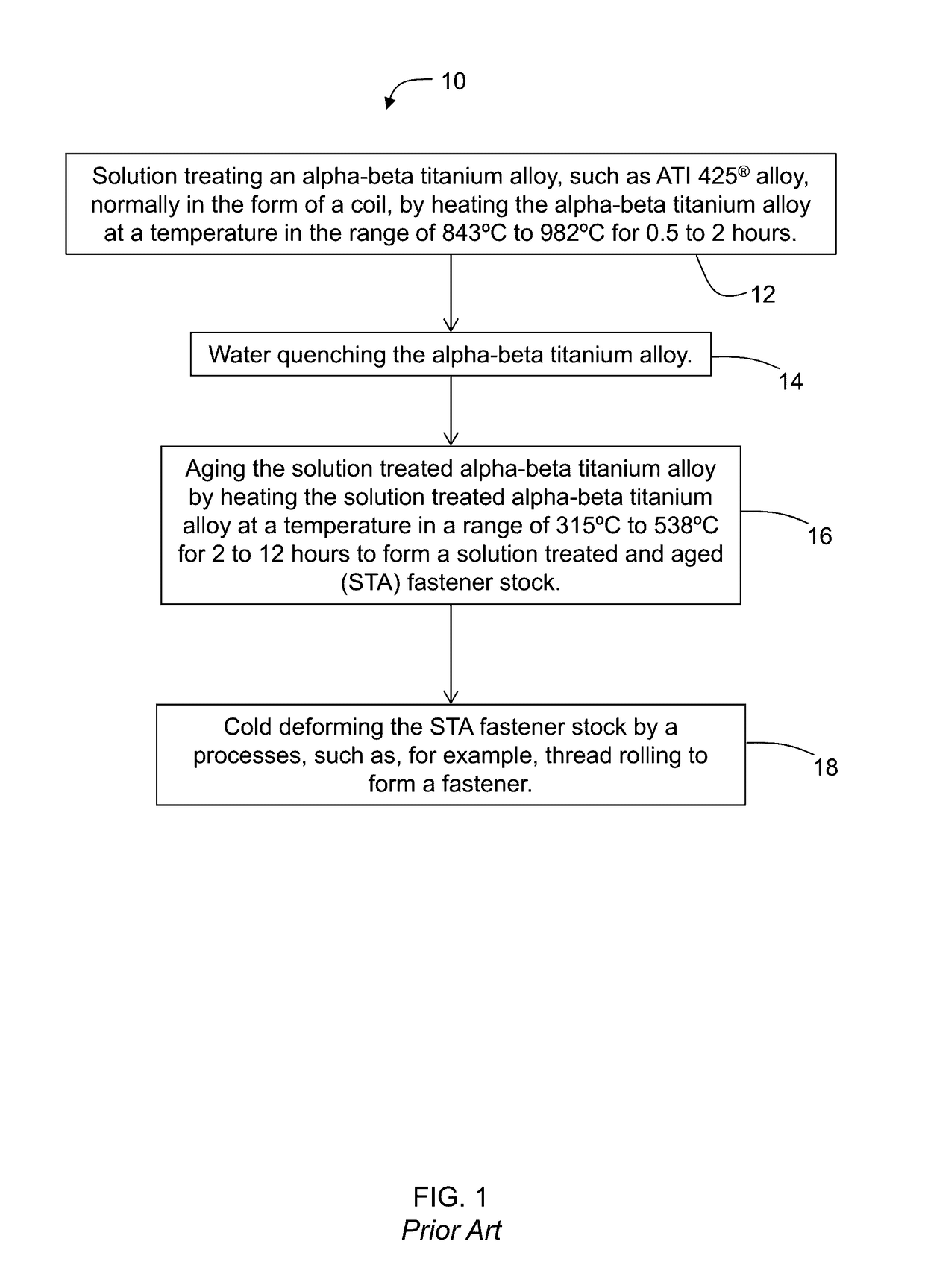Processing of alpha-beta titanium alloys
a titanium alloy and alphabeta technology, applied in the direction of threaded fasteners, screws, washers, etc., can solve the problems of limiting the acceptance of cold drawing and other low-temperature forming, process bottlenecks during fastener production, and the use of drawing and aging processes with ti-6al-4v alloys or other titanium alloys, so as to increase the tensile strength of alpha-beta titanium alloys. , the effect of increasing th
- Summary
- Abstract
- Description
- Claims
- Application Information
AI Technical Summary
Benefits of technology
Problems solved by technology
Method used
Image
Examples
example 2
[0070]The mill annealed wire fastener stock of Example 1 was solution treated at (760° C.) for 60 minutes (time at temperature), and then water quenched. The microstructure of the solution treated and quenched ATI 425® alloy wire fastener stock is shown in the micrograph of FIG. 5. It can be seen from FIG. 5 that the microstructure comprises a smaller amount of primary alpha grains than in Example 1, and both more numerous and smaller acicular-shaped secondary alpha.
example 3
[0071]Ti-6Al-4V alloy (UNS 56400; available from Allegheny Technologies Incorporated) was hot forged and subsequently hot rolled to 0.25 inch (6.35 mm) diameter wire for fastener stock. The hot rolled wire was solution treated and quenched in the manner used in Example 2. The microstructure of the solution treated and quenched Ti-6Al-4V alloy wire fastener stock is shown in the micrograph of FIG. 6. It can be seen from FIG. 6 that the microstructure comprises primary alpha grains with a matrix of acicular secondary alpha precipitated from a quenched martensite.
example 4
[0072]ATI 425® alloy was hot rolled to a wire having a nominal size of 0.25 inch in diameter. After hot rolling, the wire was either cut into straight lengths or left coiled. Subsequently, the material was solution treated in a furnace at temperatures of 865.6° C., 879.4° C., or 893.3° C. for 1 hour, followed by water quenching. The cooled material was then cold drawn to impart an effective strain of 10%, 15%, and 20%. The effective strain for these samples also corresponded to a percent reduction in cross-sectional area. The material's surface was conditioned after cold drawing to remove any surface imperfections. The surface conditioned material was then aged in a furnace by heating at 350° C., 365° C., or 380° C. for 2, 3, or 4 hours. The process conditions for the samples and mechanical test results are presented in Table 1. Tensile tests were performed in accordance with ASTM E8 2015.
TABLE 1Tensile Results (mean) for ATI 425 ® alloy SamplesEffective SolutionStrain (PercentAging...
PUM
| Property | Measurement | Unit |
|---|---|---|
| temperatures | aaaaa | aaaaa |
| temperatures | aaaaa | aaaaa |
| temperature | aaaaa | aaaaa |
Abstract
Description
Claims
Application Information
 Login to View More
Login to View More - R&D
- Intellectual Property
- Life Sciences
- Materials
- Tech Scout
- Unparalleled Data Quality
- Higher Quality Content
- 60% Fewer Hallucinations
Browse by: Latest US Patents, China's latest patents, Technical Efficacy Thesaurus, Application Domain, Technology Topic, Popular Technical Reports.
© 2025 PatSnap. All rights reserved.Legal|Privacy policy|Modern Slavery Act Transparency Statement|Sitemap|About US| Contact US: help@patsnap.com



